There is a place like no other. It’s where one can slip in and out of shadows and into the light among gods and giants. It’s a place of profound light, quiet beauty. Welcome to the Thorvaldsens Museum! Opened in Copenhagen in 1848, this was Denmark’s first museum. The magnificent Greek style building, designed by architect Michael Gottlieb Bindesboll (1800-56), houses an astounding collection of sculptures in marble and plaster by Danish sculptor Bertel Thorvaldsen (1770-1844). After training at the Royal Danish Academy of Fine Arts, Thorvaldsen gained international recognition in Rome, where he worked for more than 40 years. His pieces grace many cathedrals, state buildings, public squares, and museums throughout Europe.
I returned recently on an autumn day to this museum.
A little flea market popped up in front of the Thorvaldsens Museum. Naturally, I browsed.
The Grand Hall runs the length of the front of the building. Many of these monumental plaster figures were models for bronze statues.
In addition to the phenomenal sculptures, the building itself is resplendent with its ornate plaster ceilings, tiled floors and brilliant colors.
ABOVE: Ganymede and the Eagle. In Greek mythology, Ganymede was abducted by Zeus, in the form of an eagle, to be cupbearer to the gods.
BELOW: Mercury and Venus
BELOW: Mercury and Venus
A long view of the galleries painted in vivid colors. In this setting, the monochromatic sculptures look especially striking.
Look up! The ceilings, inspired by Pompeii, are lavishly decorated. ABOVE: A tone-on-tone ceiling executed in grisaille.
Two beautiful ceilings that remind me of Wedgwood’s Jasperware.
Weaving around the sculptures, the light seems to dance down these corridors.
The very beautiful Psyche, Greek goddess of the soul, carved in marble.
The museum also houses Thorvaldsen’s art collection and furnishings, like these portrait paintings and handsome klismos chairs.
Here is one of Bertel Thorvaldsen’s most famous works: Night (relief in marble, Ca 1815). Night and her children, all with eyes closed, are seen floating nearby an owl. (There is an accompanying roundel of Day, which I did not photograph.)
Many copies of Night were made, including this plaster roundel in our living room. Our piece is from the 1890s, and it came out of a building in Boston.
* * * * * * *
For more on this museum, please check out my friend Phyllis’ visit there. You’ll love Phyllis’ photos! And enjoy more of her work here.
Cheers,
Loi


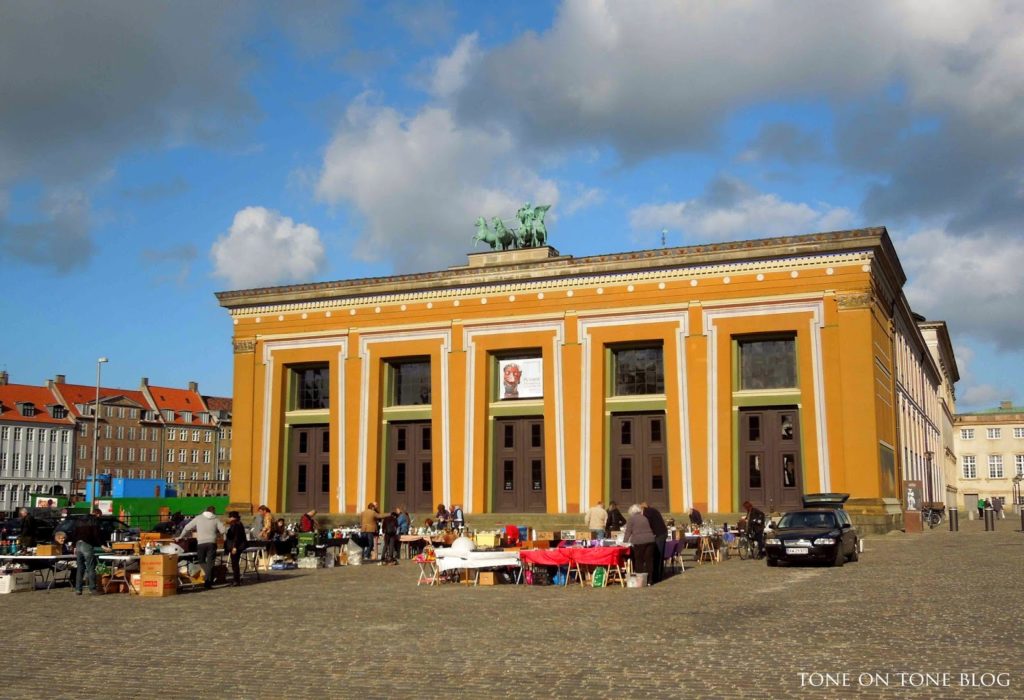
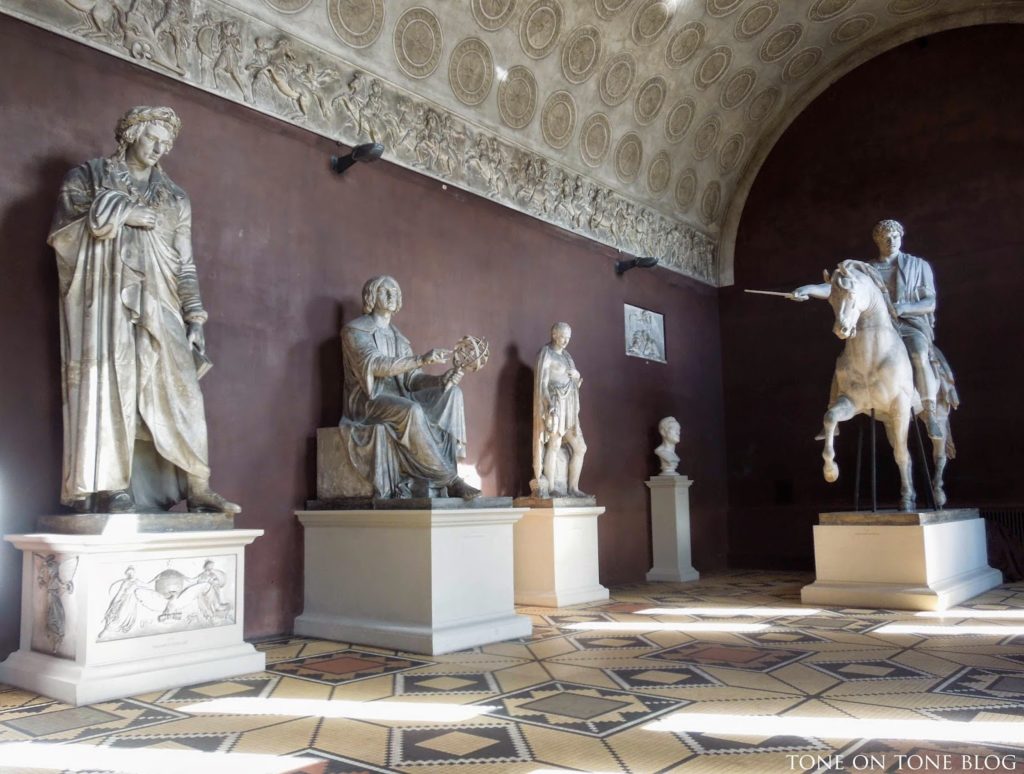
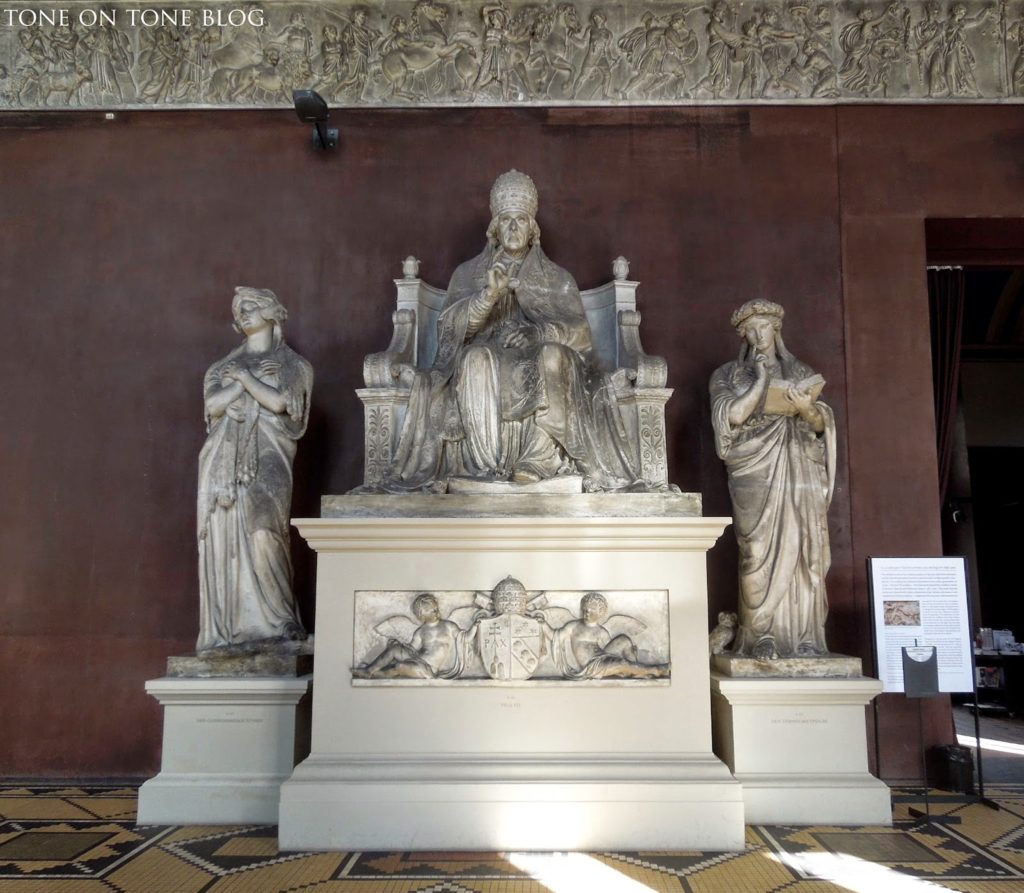
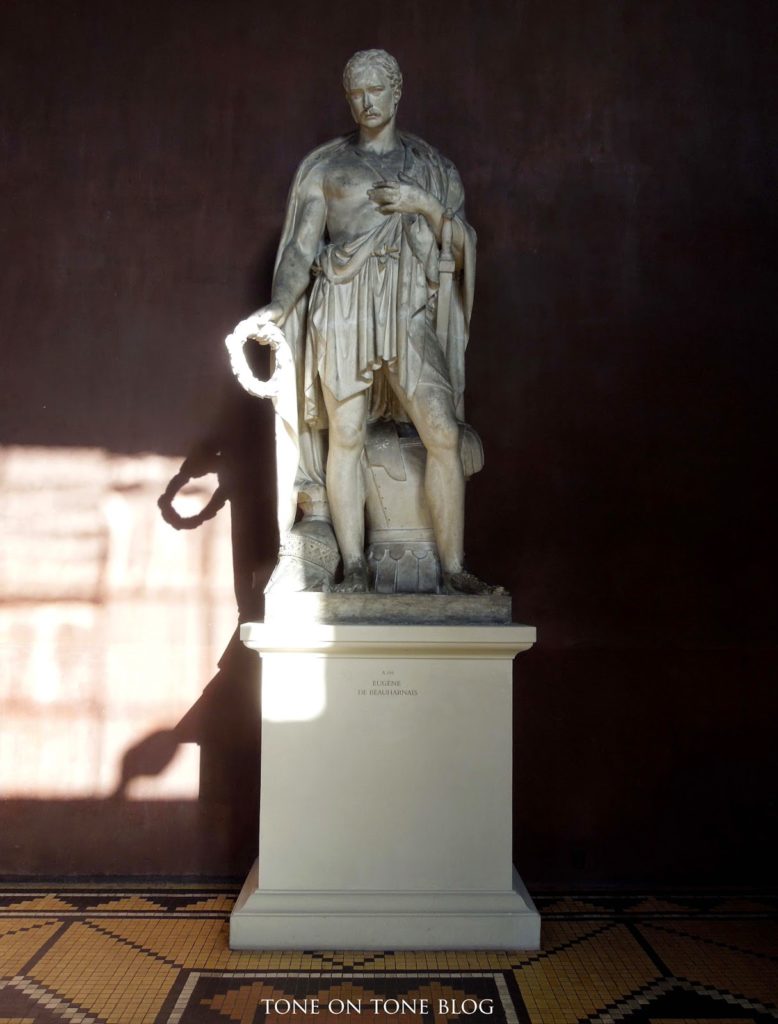
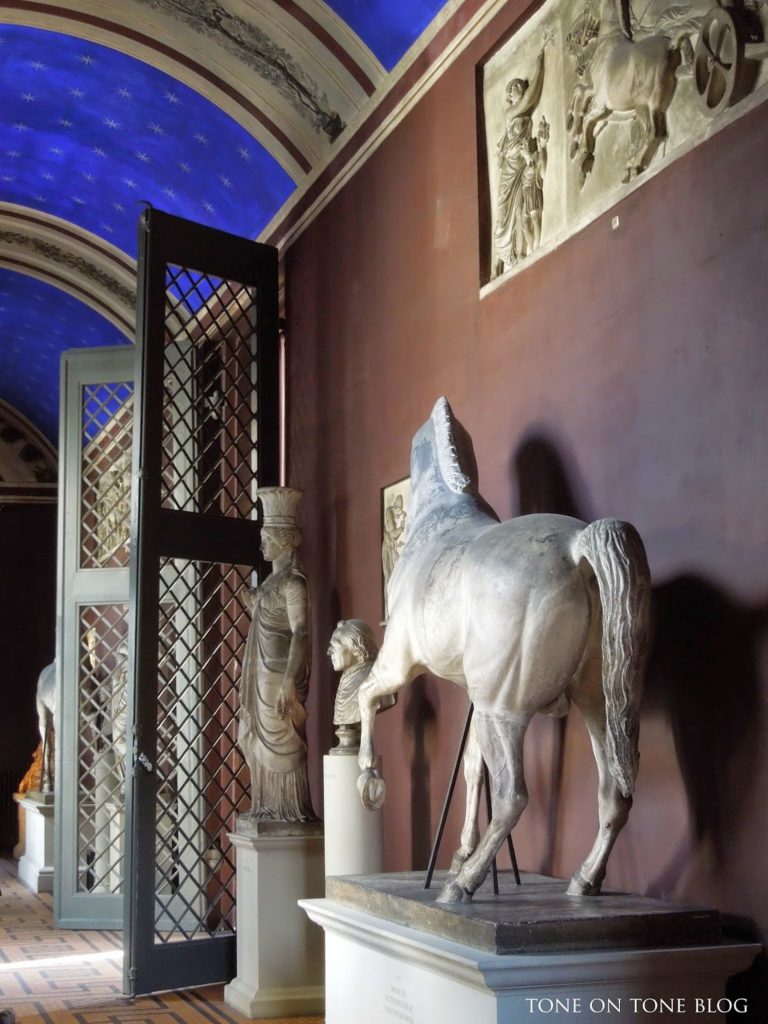
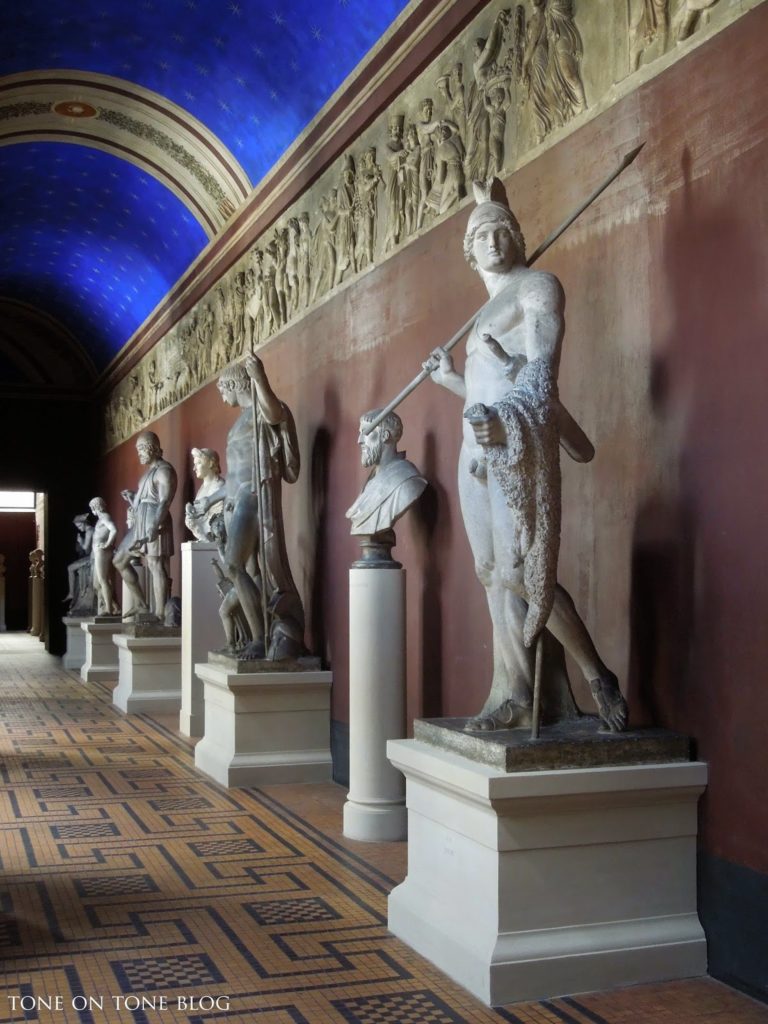
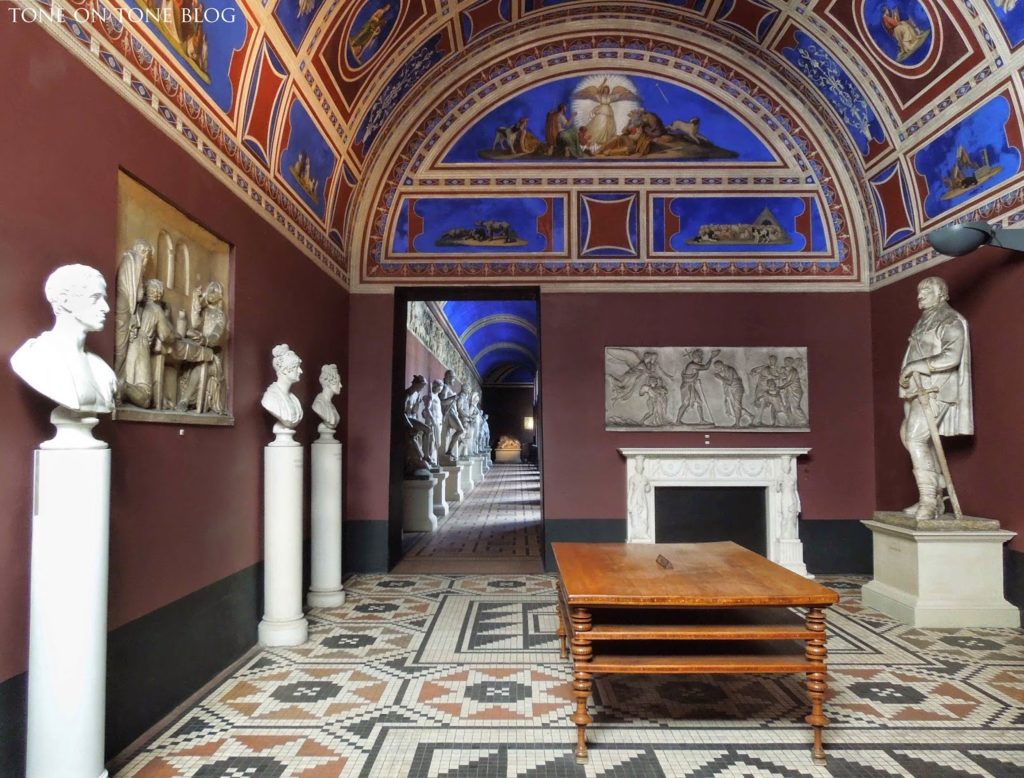
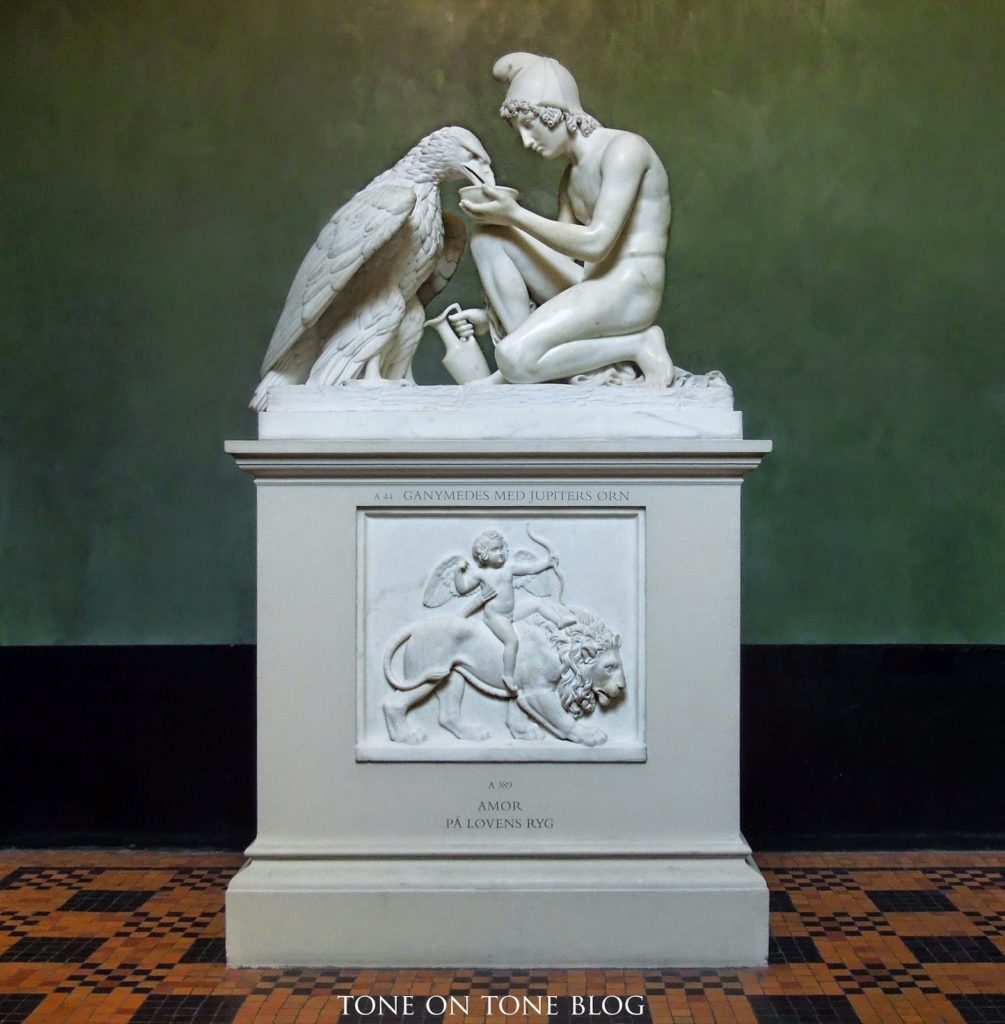
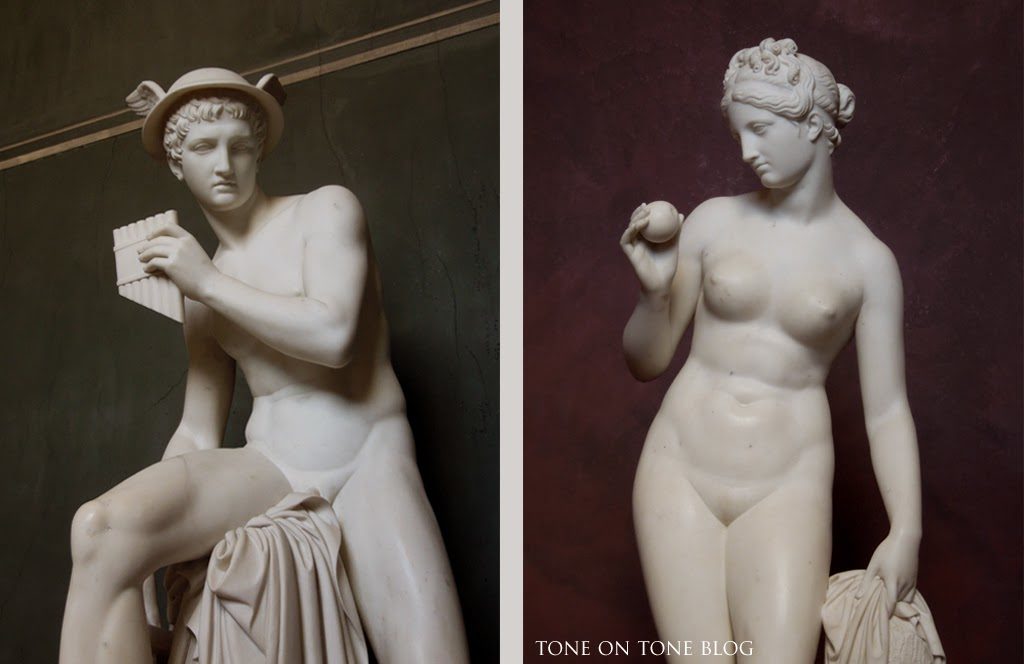
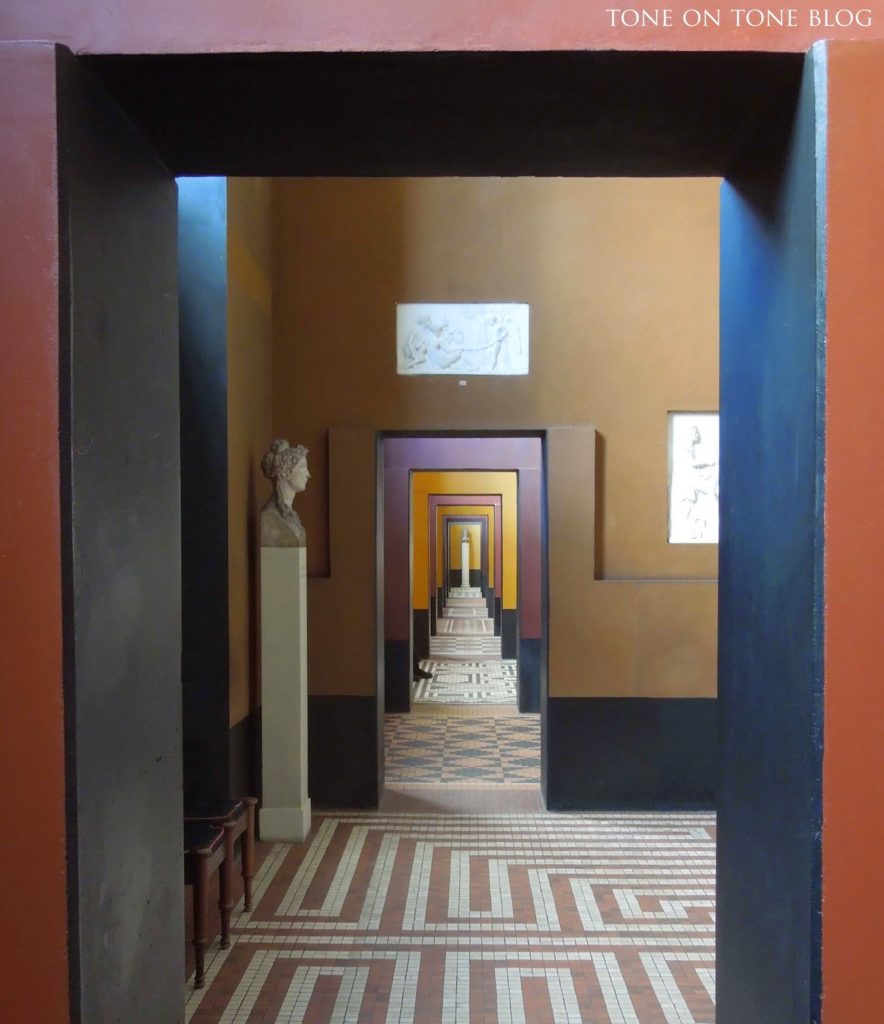
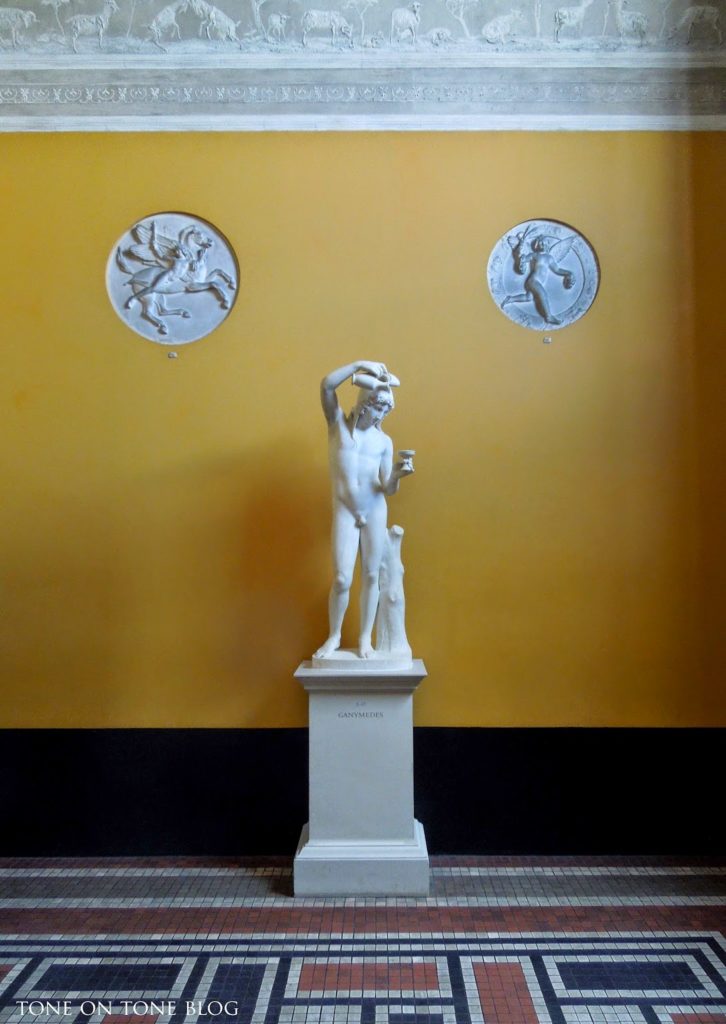
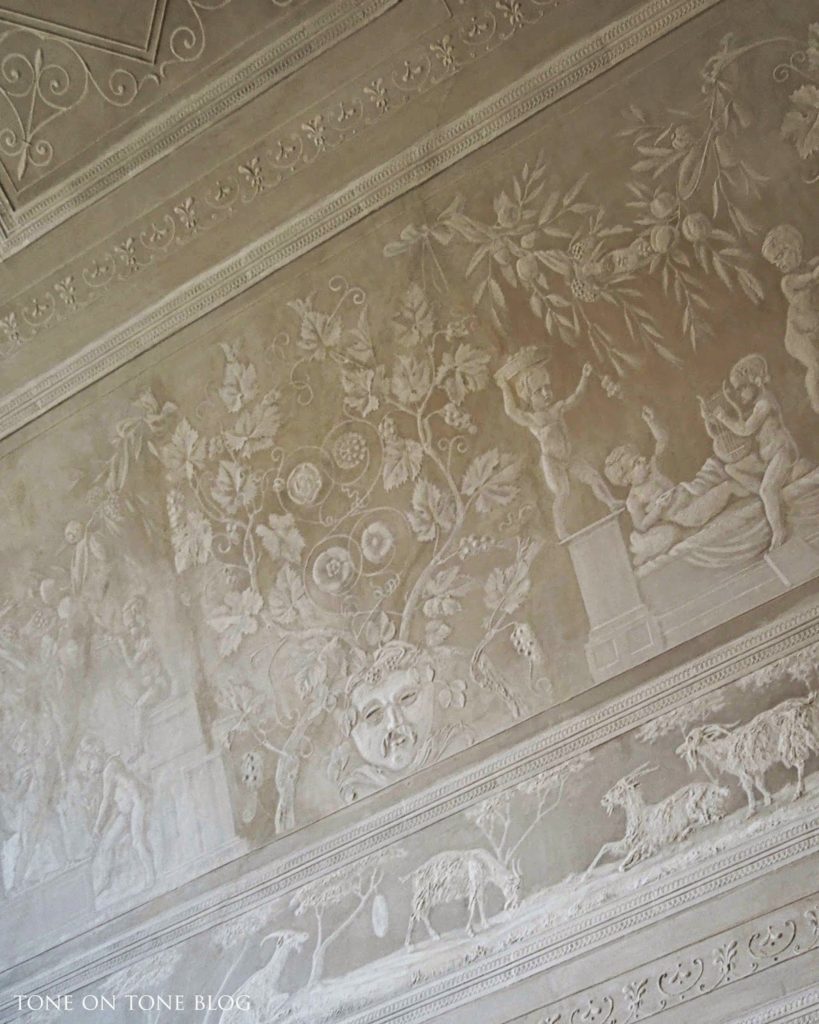
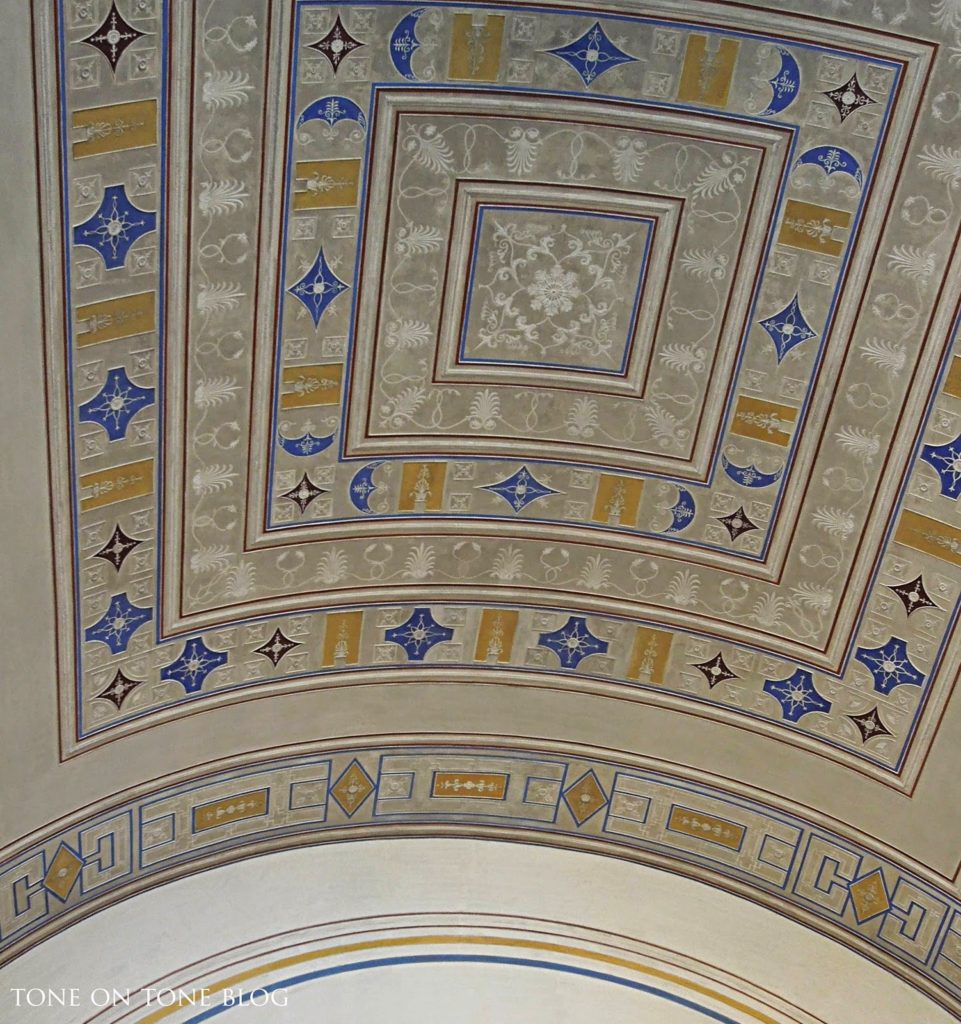
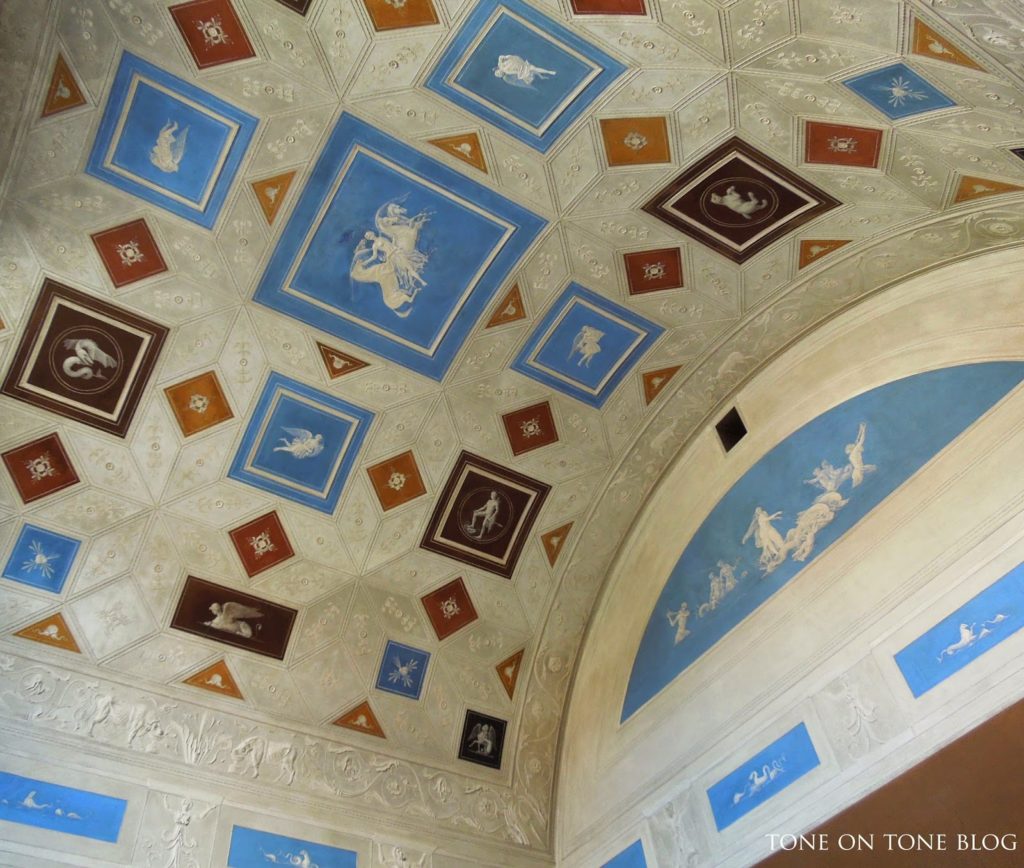
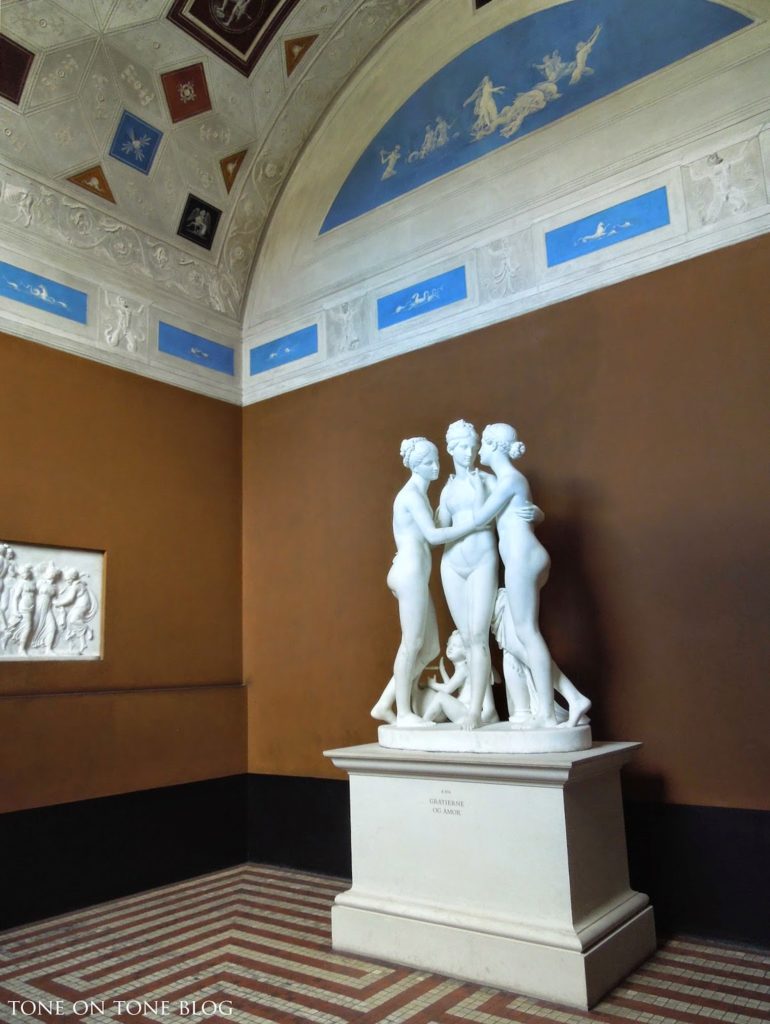
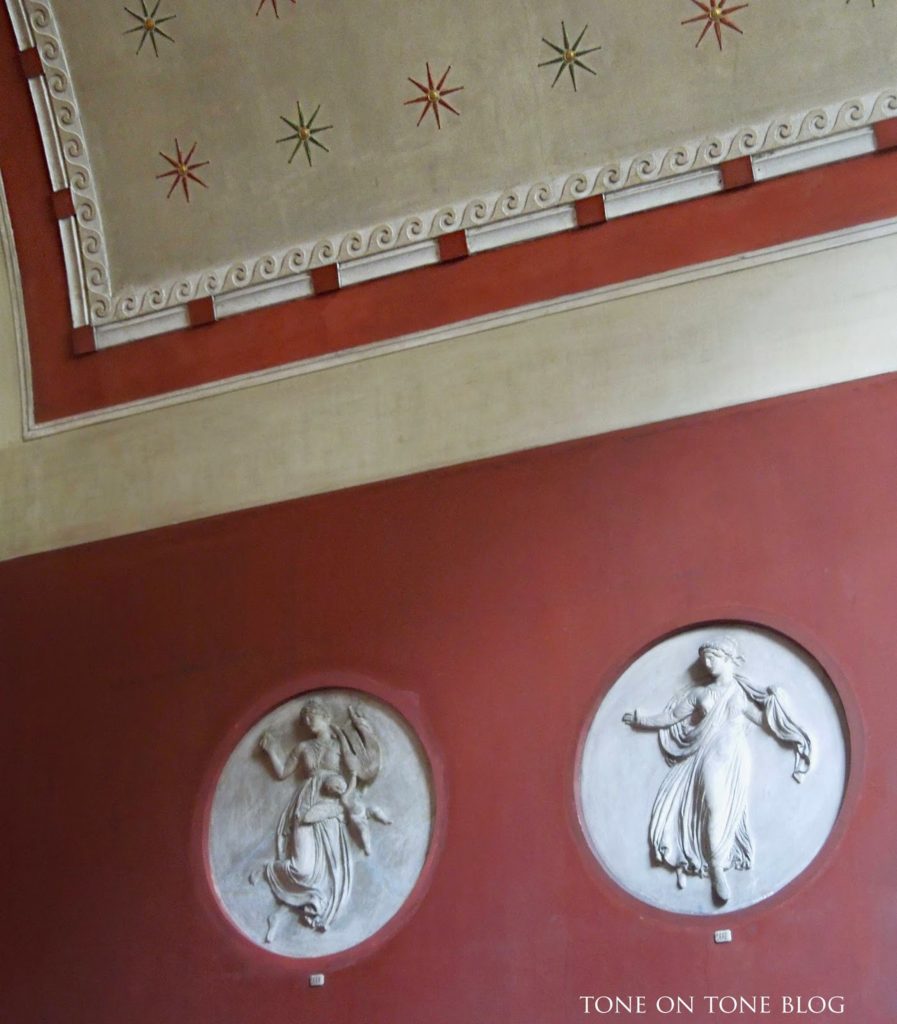
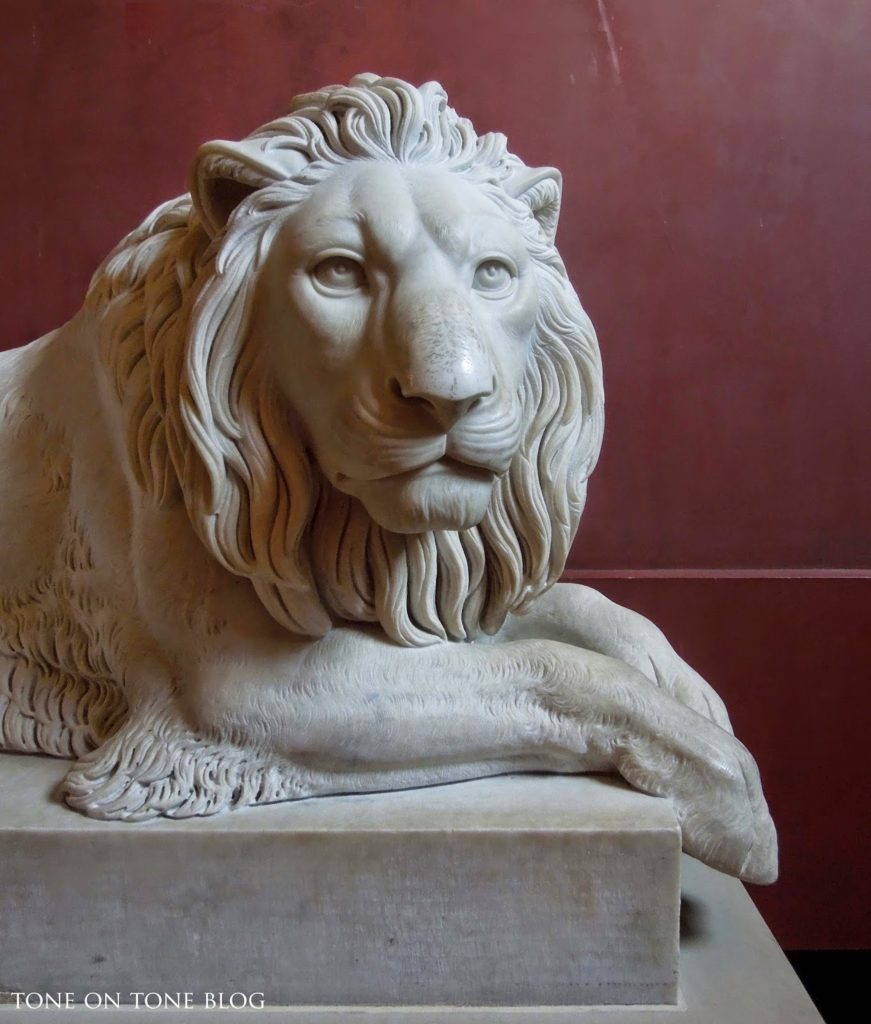
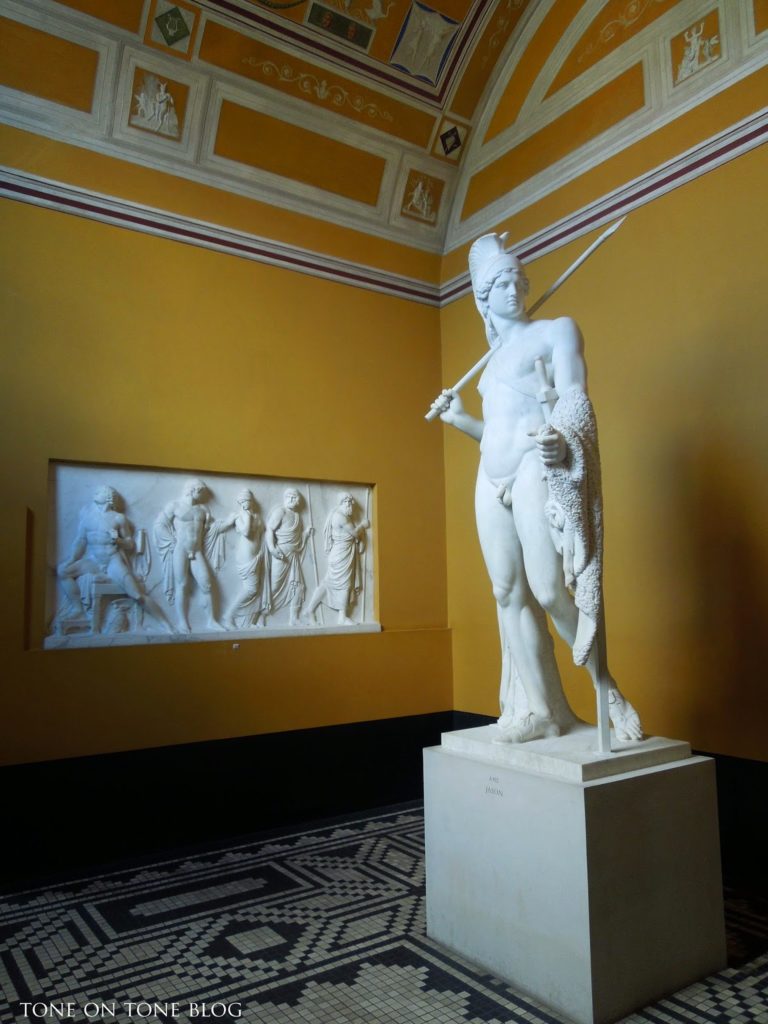
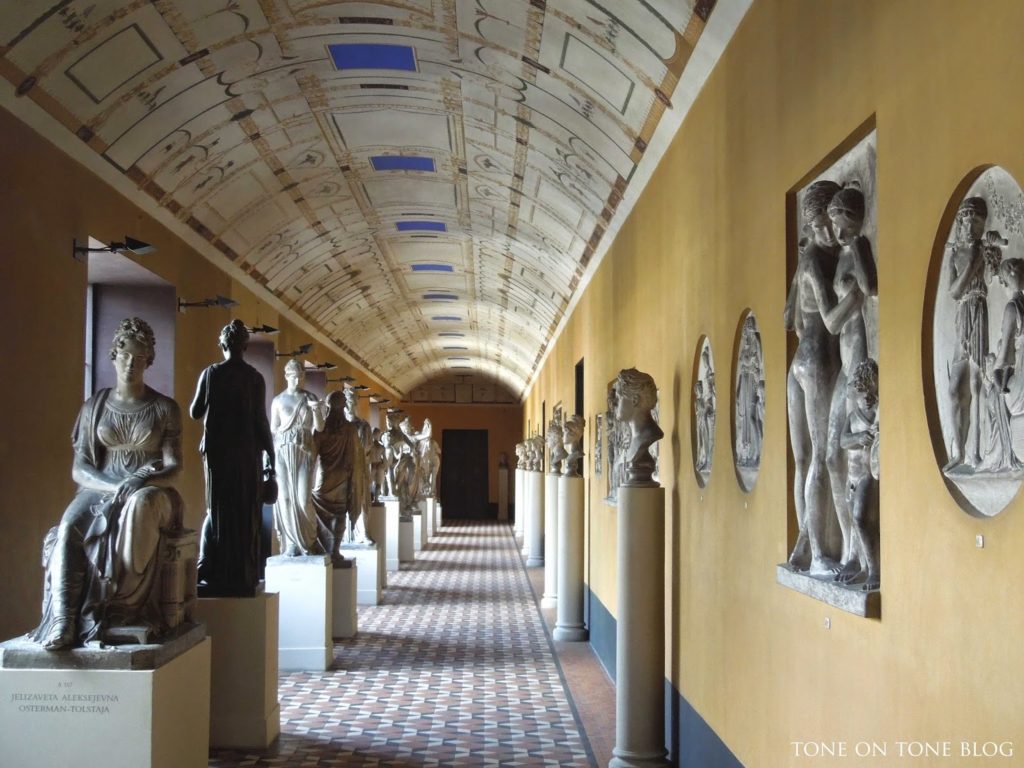
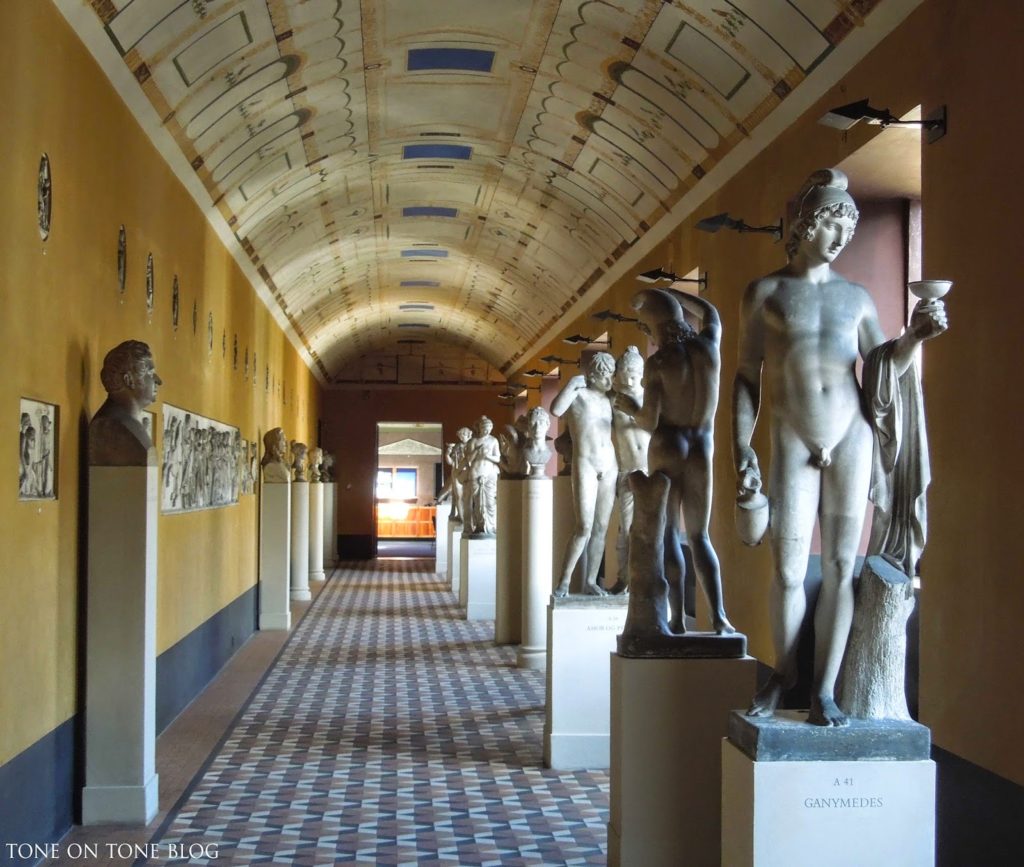
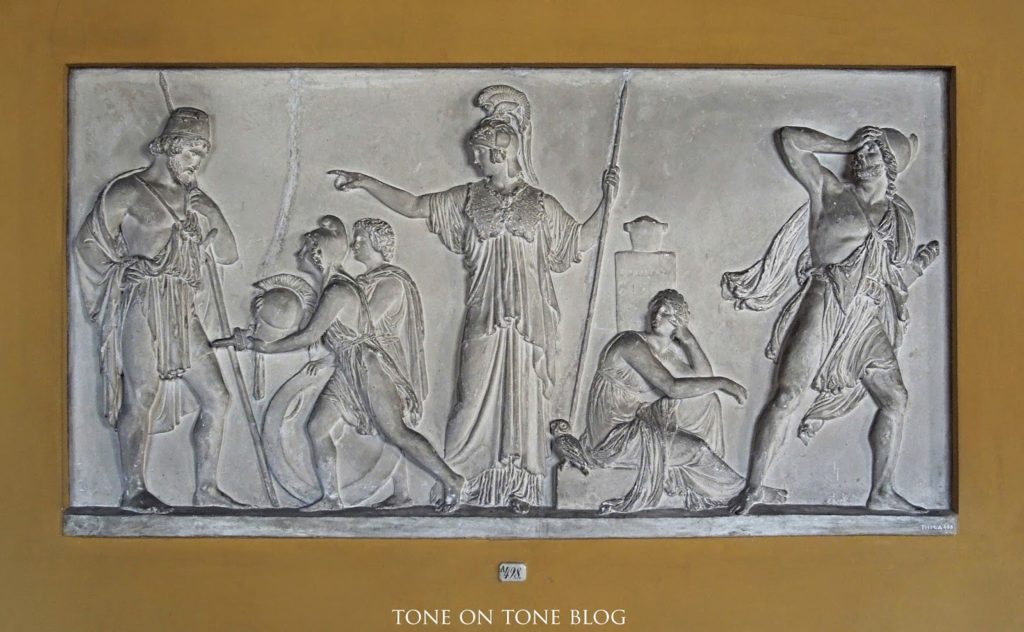
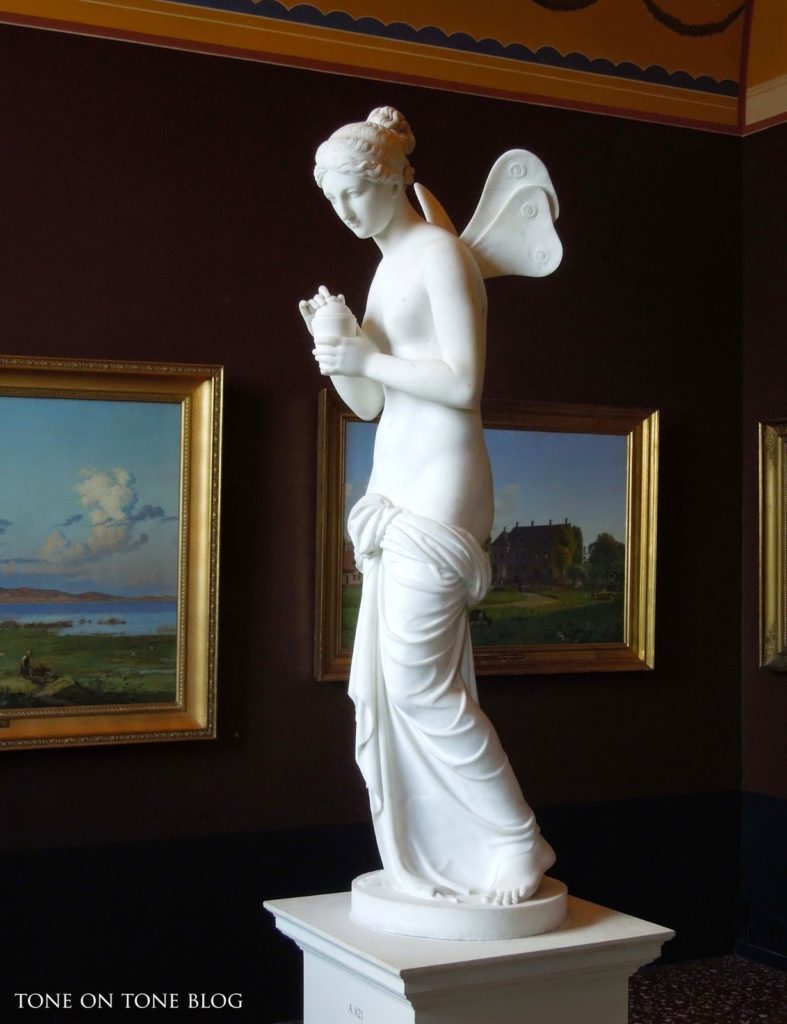
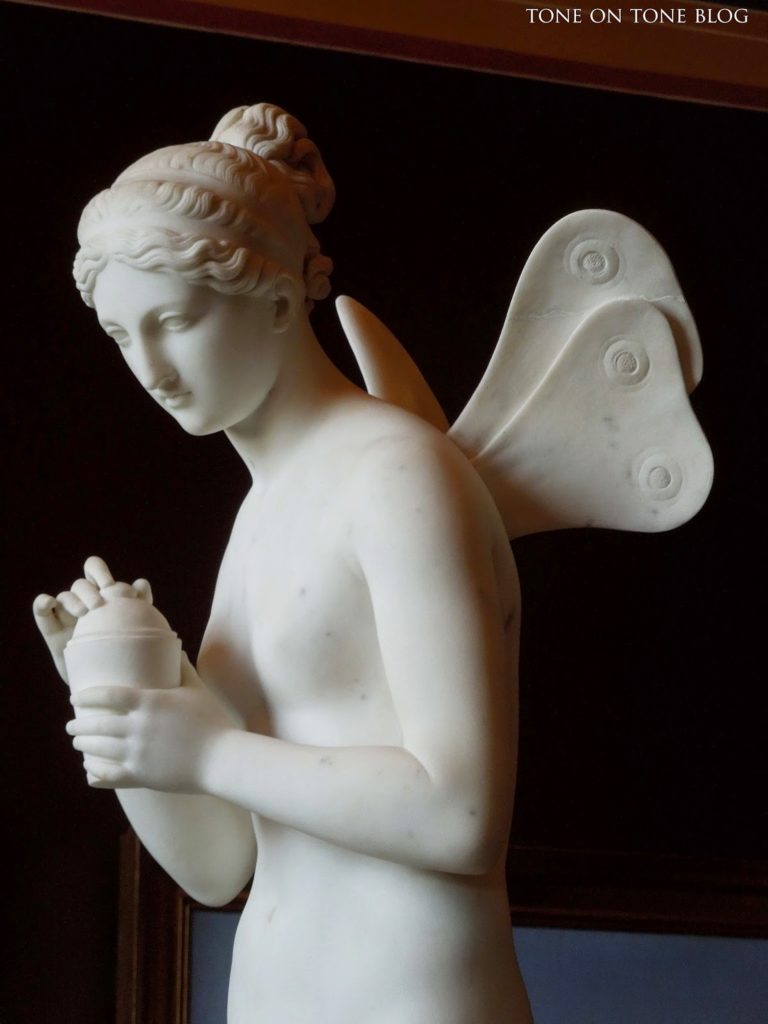
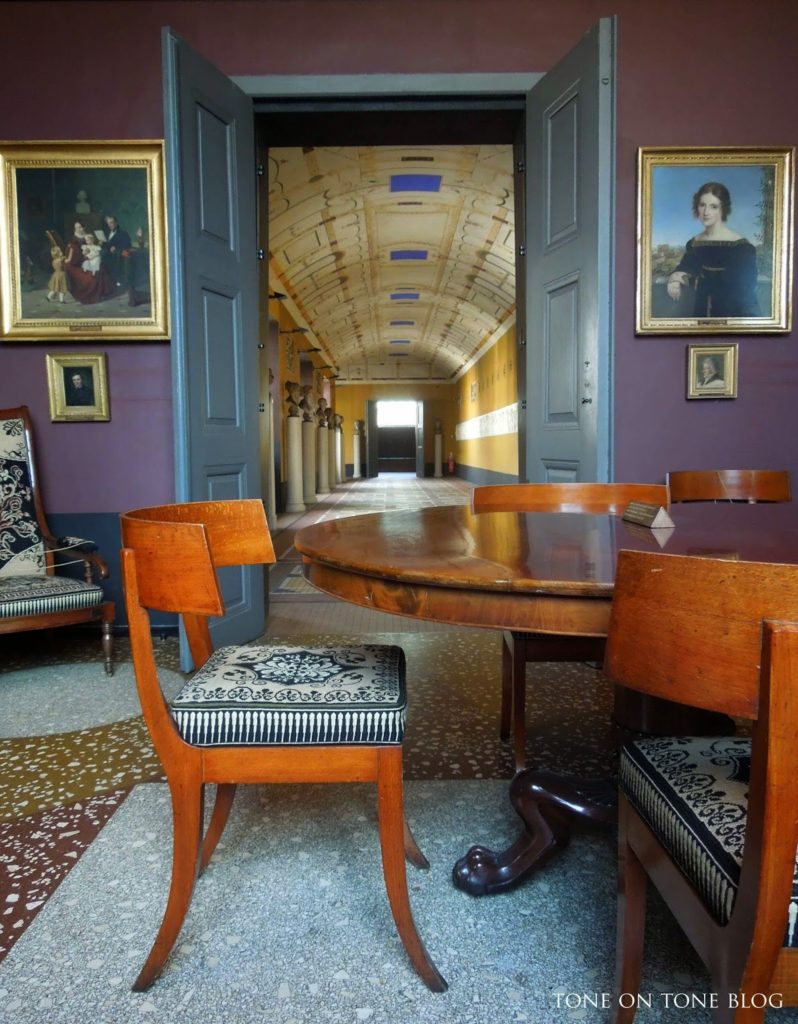
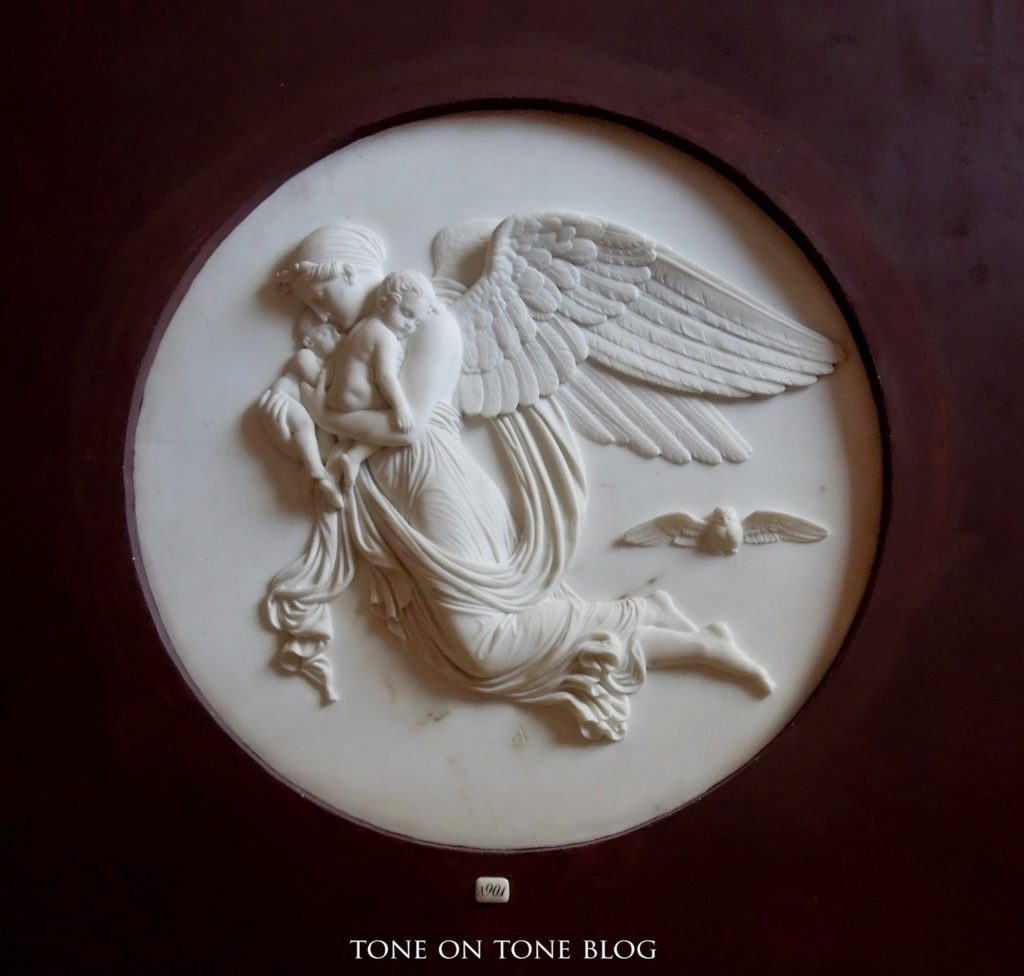
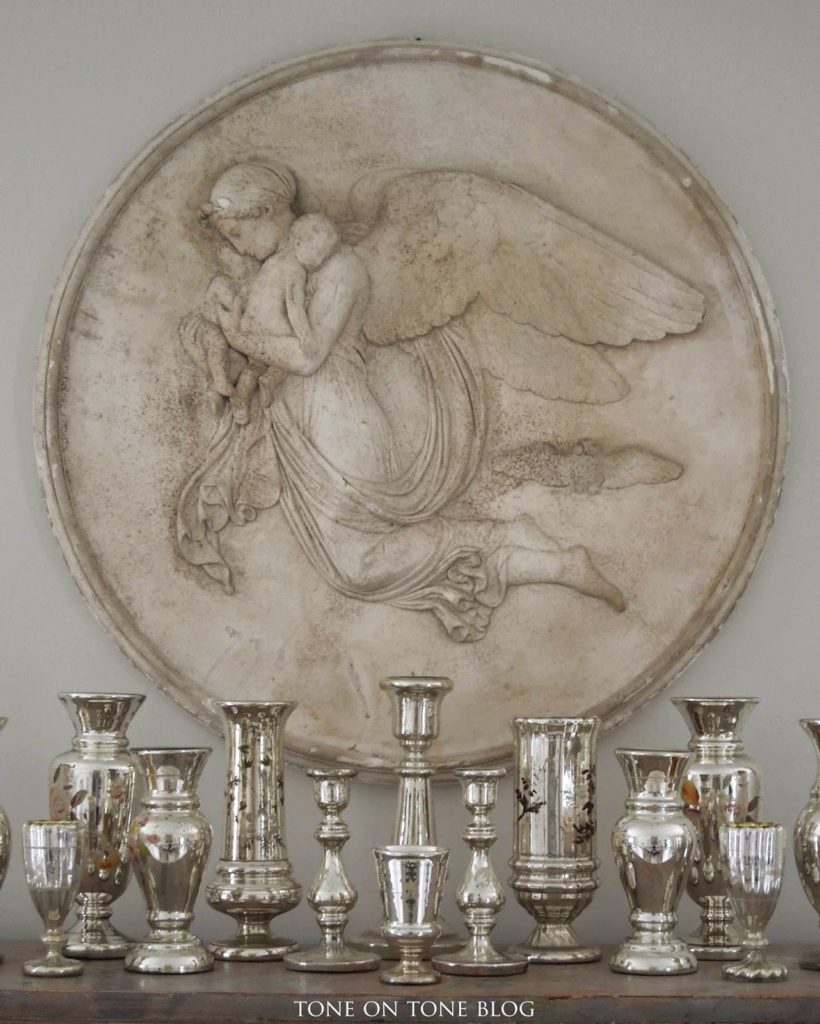
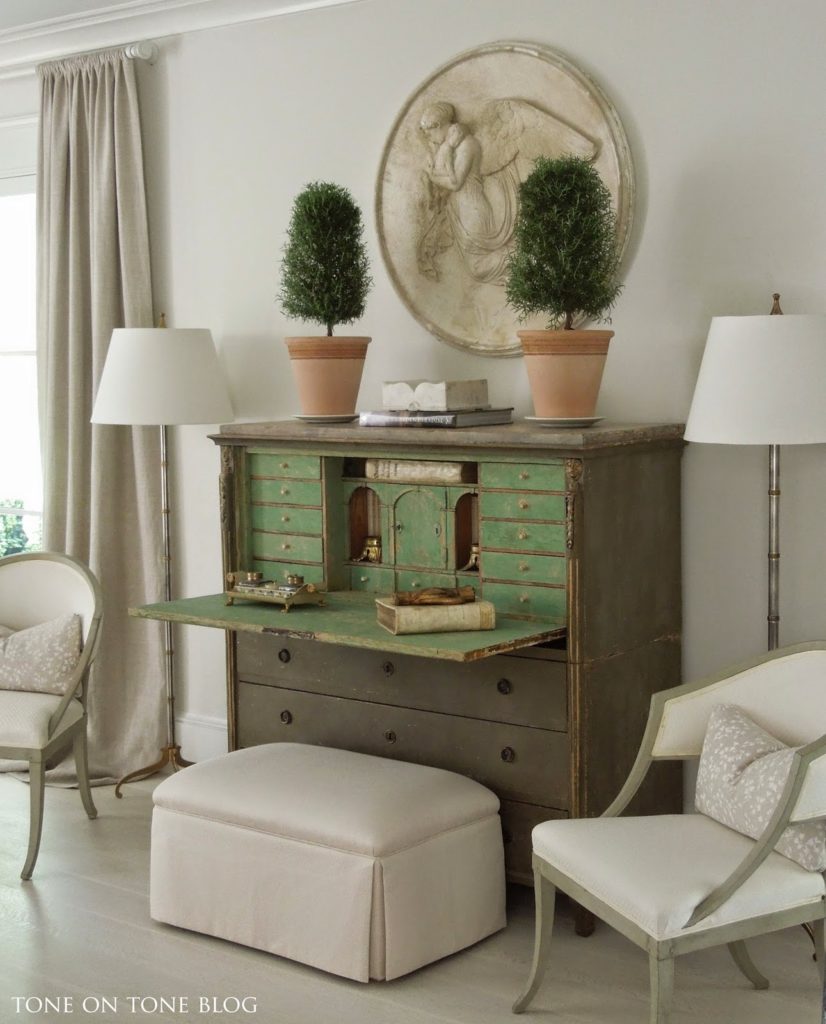
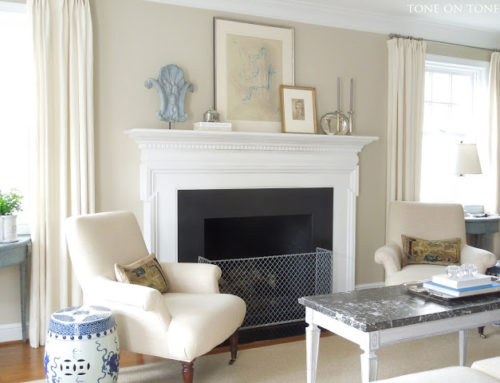
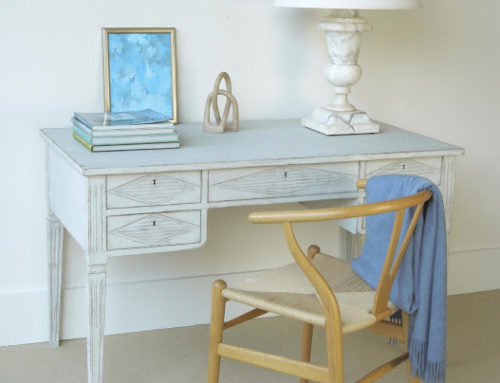

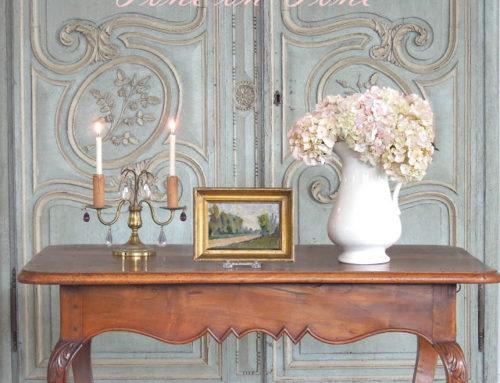
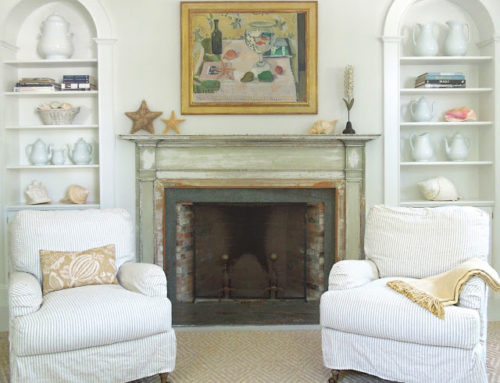
Hello Loi, So many museums today take the stand that galleries must be utterly bland in order to showcase the art displayed. The Thorvaldsen museum is dramatic testament otherwise. The vaulted ceilings, tiled floors and colored walls all add to the viewing experience and enhance the art by creating a worthy setting. At the Cleveland Museum of Art, my favorite spaces were all in the beautiful original building, with its marble portals and elaborate bronze grillwork.
–Jim
WOW- so amazing! the sculpture of psyche is just beautiful and so unique!
Beautiful Loi. So many beautiful sculptures all together is breathtaking.
I agree with Jim-too many museums are bland and many almost sterile. The Thorvaldsens Museum looks warm and inviting which only enhances a visit.
I can only dream of ever visiting this beautiful place….but one never knows.
Fondly,
-Lisa
Loi the beauty of these sculptures takes my breath away….and the ceilings!
How utterly gorgeous and thank you for sharing!
xoxo
Karena
The Arts by Karena
I have long admired your Night and her Children roundel, how fortunate you are to have it gracing your living room.
Although Bertel Thorvaldsen's sculpture is classical and situated in a traditional architectural museum, for some reason that I can't put my finger on, it still manages to achieve that special thing 'Scandinavian style'.
Your Posts never cease to amaze! This one is awesome! I have traveled all over the globe through you!
Thanks so, so much…..
xo
Patty
Ethereal!!! franki
Dear Loi, Thanks for the mention and for more views of this absolutely magical place. It is deserving of more recognition, but selfishly I loved that the galleries were nearly empty when I visited in July. I hope you and Tom have a wonderful long weekend!
xoxo,
P
Hi Loi, Thank you for this beautiful way to start my day. The light sparks my soul.
Have a wonderful week-end. xoxo
Mary
Greek Mythology is fascinating Loi. Such wonderful photographs you have here and the Night is beautiful in your living room. The Thorvaldsens Museum looks fascinating. You are lucky to have gone! Have a nice weekend!
Loi, this building but in particular your photography are STUNNING! I never knew this little gem existed (although I haven't been to copenhagen since 1987?). Thanks for sharing!
Hi Loi, Visiting a grand museum is one of my most favorite things to do, so I'm so glad you took us along with you to the Thorvaldsens. It's stunning. Those floors and the ceilings are works of art in themselves. I've never been to Denmark, but when I do this will certainly be on my list. I feel like I'd like to try to capture some of the beautiful shadows and lights from your photos in a painting.
Hope you have a lovely weekend! XO
Loved the TOUR LOI.I have never been to SWEDEN……….I know I would enjoy it!The third photo down is the color I will be using in my guest room as an accent color………..PALAIS ROYAL GREY by RALPH LAUREN and that color……………do YOU approve?I hope to be done by MONDAY!!!!!!!OFF I GO!XX
How stunning your photography is … capturing all the shadow play, a beautiful museum. I've never gone to Denmark and if I ever do I will visit this amazing museum of magnificent Architecture. Loi the Night you have in your living room is displayed in a perfect spot, just stunning. Thank you for taking us on this tour.
xo,
Vera
Hi Loi,
This museum is a work of art in and of itself. I enjoy the photographs Phyllis took and shared, now these. It's truly one of the most beautiful displays I've ever seen. I thought Night looked familiar. I've always admired your plaster of this.
Enjoy your weekend, wherever you are.
xo
Karen
So beautiful. I really want to go there.
Good evening, Loi! I got your email notification late, but I am charmed by your share here. I also saw another post from a French blogger who shared her visit to Copenhagen and that too astounded me. The grays, whites, and then bright colors that the Danes use are striking and now my favorite styles of décor are French, Swedish and Danish! Thanks to you, I have learned so much about light and shadow, and this is such an inspiration (I ADORE YOUR HOUSE!)
Have a super weekend dear Loi! Anita
Loi, thanks for sharing this museum. Denmark is on our travel list. Hope to get there one day soon.
Your rondel is gorgeous! What a special piece to have in your own home.
Thanks for the email. My husband is considering the table, but not sure where we might use it. Will let you know if he decides. Thanks again ~ Sarah
I would have loved to walk through that museum! The sculpture is exquisite and so pristine and beautiful! Thank you dear Loi for sharing this with us. You show me images and places I only dream of going to, hoping to one day go to Denmark and Sweden. Your piece is so special and love Day and Night. Lovely! Have a great weekend. xo Nancy
I love traveling vicariously through you, Loi. What a gorgeous museum and particularly love Night and the roundel is perfect over your desk. Enjoy your weekend!!
This is a very nice Museum. The long galleries are so fascinating, wondering about the treasures in those rooms. Visiting Copenhagen is on my Bucket list. Hopefully, I can visit it one day.
among light shadows and as mentioned, brilliant color. the museum structure itself is equally stunning! a revised bucket list is in order
thank you for sharing such loveliness loi
debra
An intriguing venue, home to immortal, marble inhabitants, whose presence, under the beautifully tiled 'skies', enrich the atmosphere with light.
Thanks for sharing your wonderful visit!
Happy weekend,
Poppy
So much beauty in the light and shadows and in the figures that awaken our senses.
pve
Thank you for the time and thought you put into every entry. Let us see more of your beautiful Maine home. each of your blogs inspires me to edit and move things around that I most love – I see them differently that way! Hugs from the Delaware shore.
Hi Loi, it really is so moving and overwhelming to be in their presence. Wish I was in yours;) xob
Hello, Loi,
You can well imagine that visiting this handsome museum ranks near the top of my bucket list. How great that those floors and ceilings — in fact all the details of the museum — are in keeping with the Neoclassic style!
What a fabulous museum which you captured so beautifully. I especially love the grisaille and the detailed ceilings. That always blows my mind!
Hello Loi,
I love the photos you took during your visit. The landscape painting behind the Psyche statue look pretty amazing. I am especially smitten with the image of the original Night followed by the photo showing the replica you have in your living room. How cool is that? Thanks for sharing your museum visit with us. It was fantastic.
Susan
All I can say is magnificent….and how wonderful that you have that amazing piece of the Night … it looks so stunning in the room!…Touring that museum must have been the most wonderful experience.
Dear Loi,
Thank you for the lovely tour! I love that this museum is so warm and inviting despite it's long history and grandness. I must add this place to my "places to go" list. And I've always admired your plaster roundel – great to know it's origin 🙂 xx
Very interesting Loi…the colors are so bright against the monotone..such a contrast!
How amazingly beautiful! Your pictures are fabulous and could easily warrant a coffee table book. Filled with such treasures from the past, the sculptures are truly breathtaking.
I did a double take when I saw the "flea market" that was set up just outside this majestic building and imagined this happening in front of the Met or The Getty Museum and it just would never happen..I think it speaks to their liberal and open society and governing of things, it brought a smile to my face that next to something so grand and priceless as a museum housed with irreplaceable treasures that they allow local merchants to come and sell their wares…..you really have to admire that level of civility.
I seriously cannot find an appropriate adjective to describe all the beauty within this post; WOW!! Thank you for sharing with us. Thanks for taking that shot that shows a long view of the different colored galleries just for me!:). Love it! Also, I am a big fan of Phyllis's, so I am thrilled you linked to her work. Love you both! xx
i'm sold. on the museum. on a fleamarket beside the museum–spoiled rotten you are! and night. what a gorgeous piece so suggestive of quiet serene beauty…the stuff you and i both are drawn to. thanks for the tour, china boy. i'm ready to plan my next european getaway.
Every time I come here, I try have to take a deep breath and just smile in knowing that such beauty exists in the labor of humanity. Gray, white, natural tones…..it is of the earth and so glorious, Loi!
Thank you kind and sweet friend, for coming to visit. I hope your autumn is as moody and beautiful as ours is; the colors are spectacular and the fireplace is ready. Sweet day to you dear Loi! Anita
I've never been to Denmark so I always enjoy tours of this country including this wonderful museum, thank you Loi! That Night piece in your living room is absolutely perfect!
your photos are so beautiful and I adore how you describe things. makes me feel as though I was there! Have a wonderful weekend Loi!
the great arrangement and the exhibition, particularly light and shades